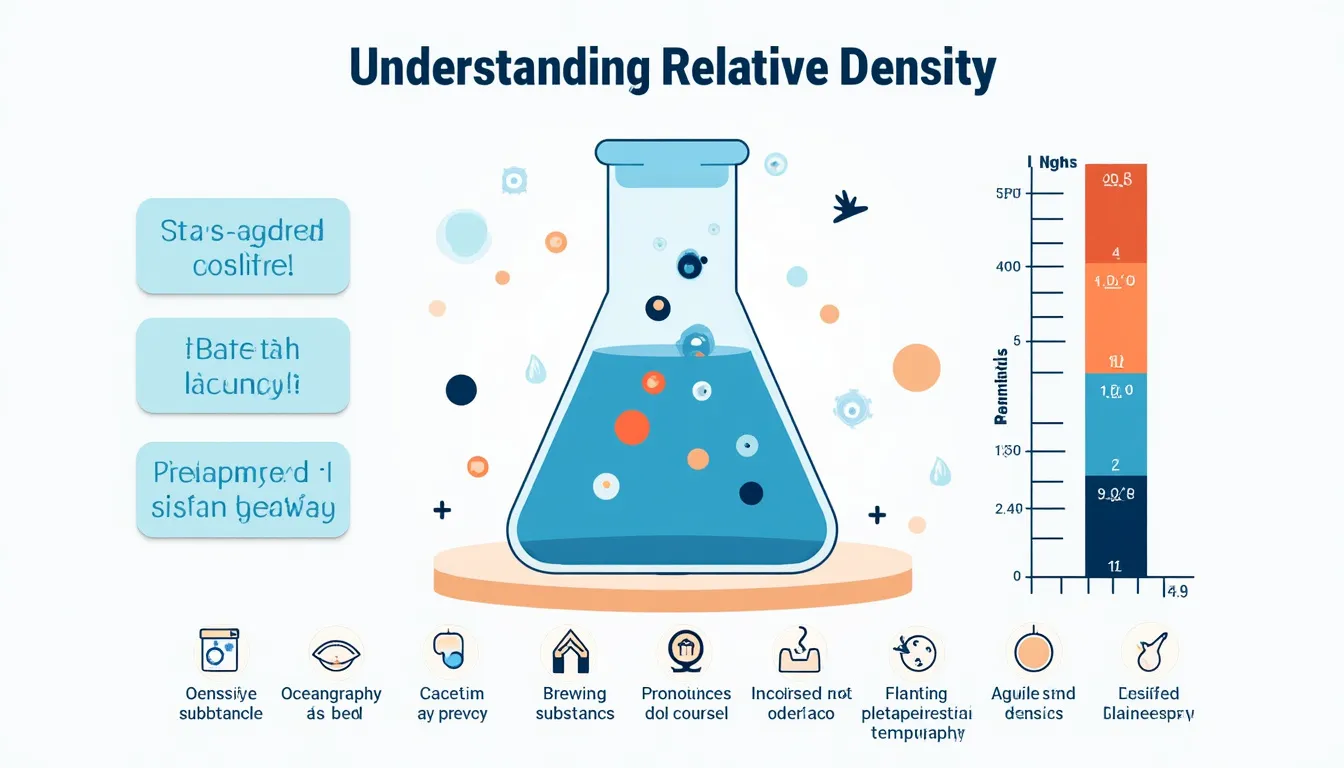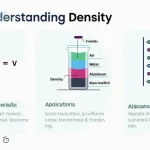Relative Density Calculator
Is this tool helpful?
How to use the tool
- 1. Enter substance density – try 2700 kg/m³ (aluminum) or 0.79 g/cm³ (octane).
- 2. Choose the substance unit – kg/m³ or g/cm³ must match your number.
- 3. Enter reference density – default is 1000 kg/m³; you could type 1350 kg/m³ (sea water at 35 ‰ salinity) or 1.025 g/cm³.
- 4. Pick the reference unit – again, kg/m³ or g/cm³.
- 5. Click “Calculate” – the calculator converts units automatically and displays a unit-less relative density.
Formula used
Relative density (RD) is calculated with:
$$ RD = rac{\rho_{substance}}{\rho_{reference}} $$Example A
- Substance: 2700 kg/m³
- Reference: 1350 kg/m³
The material is twice as dense as the reference and will sink.
Example B
- Substance: 0.79 g/cm³
- Reference: 1.025 g/cm³
The material is 23 % less dense than sea water and will float.
Quick-Facts
- Pure water at 4 °C: 999.97 kg/m³ (NIST Chemistry WebBook, 2023).
- Average sea water (35 ‰, 15 °C): ≈1025 kg/m³ (UNESCO Technical Papers 44, 2011).
- ISO 1183-1:2019 defines relative density as a dimensionless ratio (ISO, 2019).
- API gravity converts RD at 60 °F to grade crude oils (API Manual 11-1, 2020).
- “Gold’s RD is about 19.3, the highest for a major metal” (CRC Handbook 102nd ed., 2021).
FAQ
What is relative density?
Relative density is the ratio of a substance’s density to a reference density, usually water, giving a dimensionless value (ISO 1183, 2019).
How does temperature affect my result?
Densities change with temperature; water drops to 988 kg/m³ at 40 °C (NIST, 2023). Always measure both densities at the same temperature for accurate RD.
Why is the value unit-less?
Units cancel in the racρₛₜᵦₛₜₐₙcₑ / ρᵣₑf equation, so the answer expresses a pure ratio, simplifying cross-industry comparisons (ISO 1183, 2019).
Will an object float if RD < 1?
Yes. When RD is under 1, buoyant force exceeds weight, allowing the object to float in the reference fluid (Archimedes’ principle, Halliday & Resnick, 2014).
How do I convert g/cm³ to kg/m³?
Multiply by 1000. Example: 1.2 g/cm³ × 1000 = 1200 kg/m³ (NIST unit conversion table, 2023).
Is specific gravity the same as RD?
Yes. Many industries, including brewing and petroleum, use “specific gravity” interchangeably with relative density (API Manual 11-1, 2020).
What accuracy do labs require?
ISO 15212-1 calls for ±0.0005 RD when verifying hydrometers used in quality control (ISO, 2018).
Where is RD critical?
Engineers use RD to size flotation cells, ship ballast, and pipeline pumps, ensuring safe designs (Marine Engineering Handbook, ABS, 2022).
Important Disclaimer
The calculations, results, and content provided by our tools are not guaranteed to be accurate, complete, or reliable. Users are responsible for verifying and interpreting the results. Our content and tools may contain errors, biases, or inconsistencies. Do not enter personal data, sensitive information, or personally identifiable information in our web forms or tools. Such data entry violates our terms of service and may result in unauthorized disclosure to third parties. We reserve the right to save inputs and outputs from our tools for the purposes of error debugging, bias identification, and performance improvement. External companies providing AI models used in our tools may also save and process data in accordance with their own policies. By using our tools, you consent to this data collection and processing. We reserve the right to limit the usage of our tools based on current usability factors.







